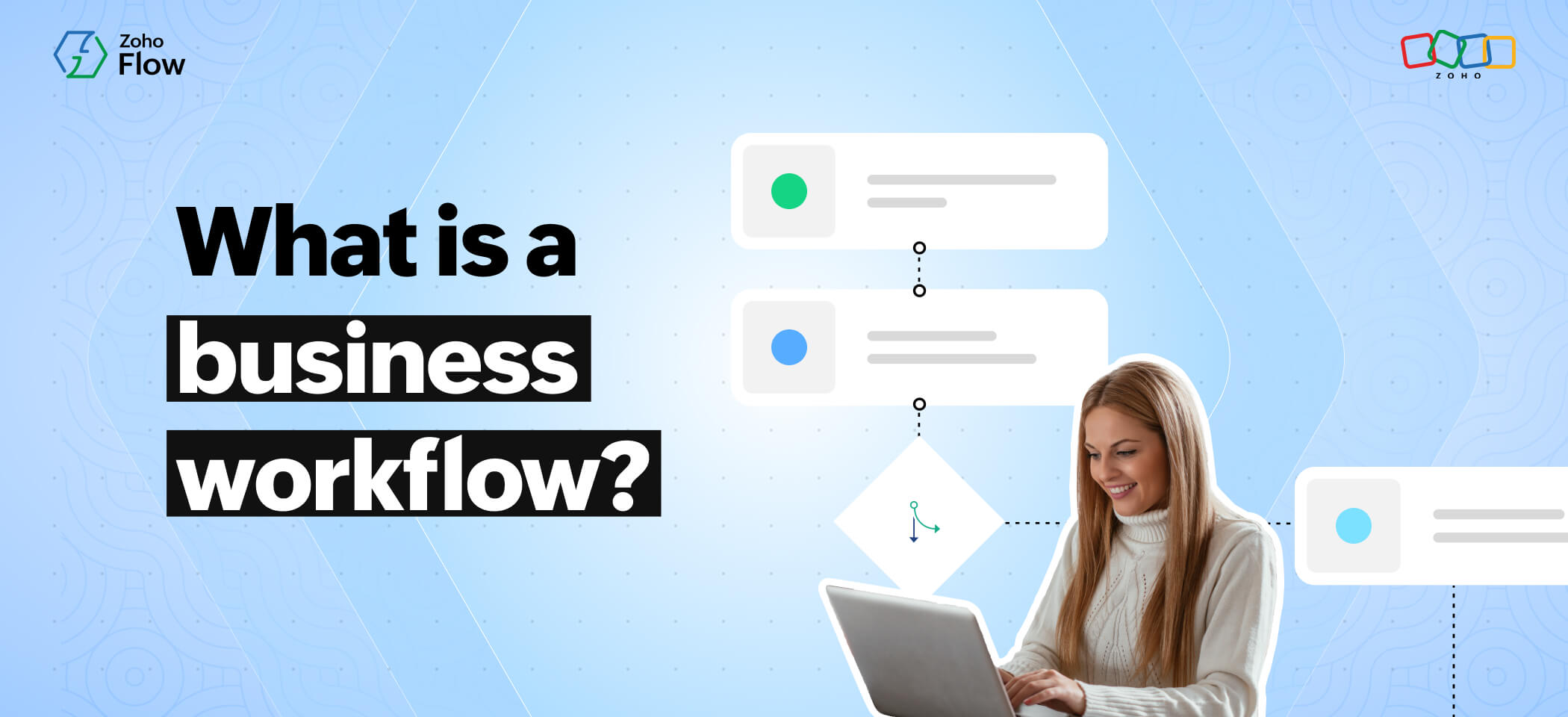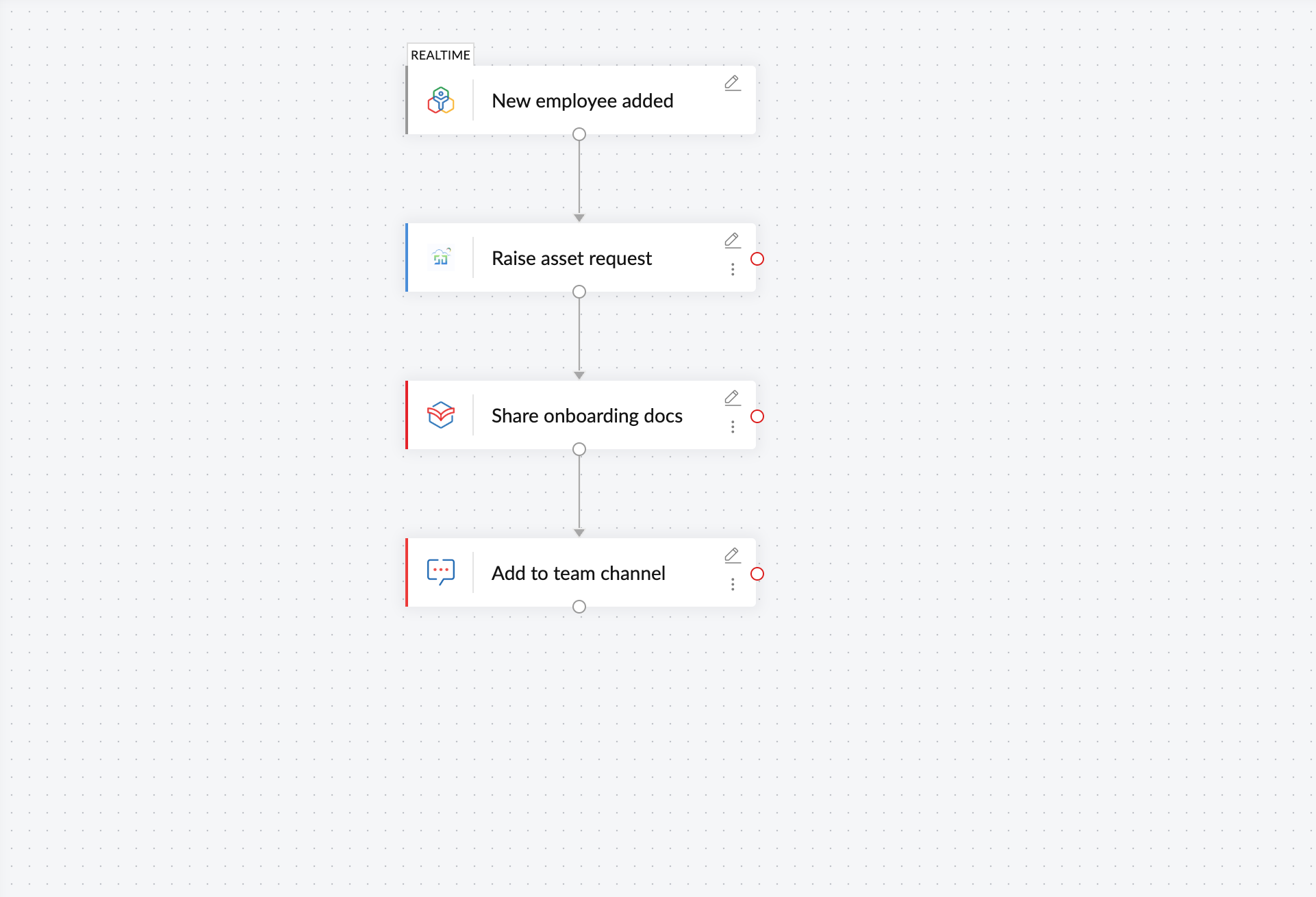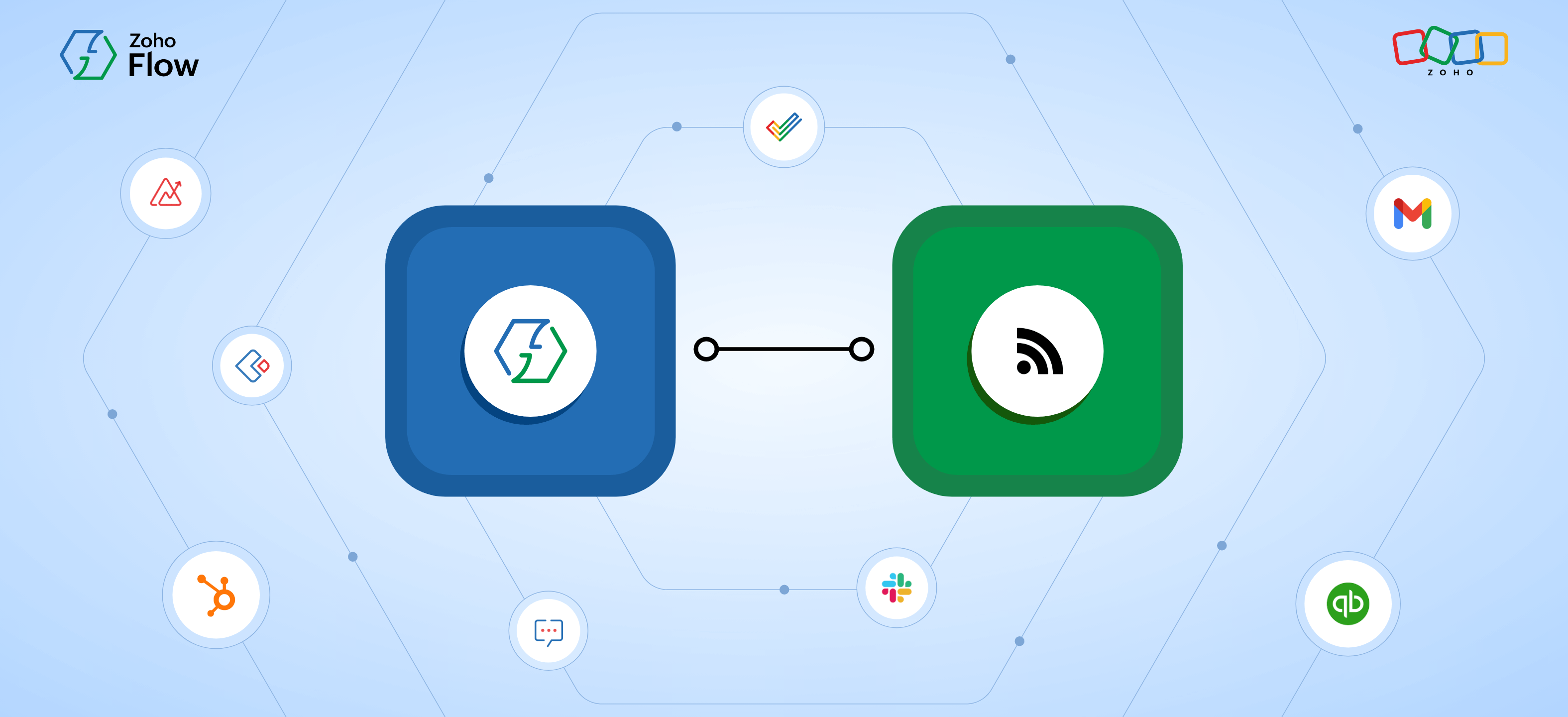What is a business workflow?
- Last Updated : November 3, 2025
- 0 Views
- 4 Min Read

Summary:
- A business workflow is a structured sequence of tasks or processes that can help businesses achieve specific goals efficiently.
- Constructing a business workflow involves identifying tasks, defining their sequence, assigning responsibilities, choosing the right tools, and ensuring those tools are connected.
- Connected tools can help you automate multi-step workflows, and streamline operations end-to-end, eliminating delays, manual efforts, and errors.
Every business today has to perform a variety of operations that are spread across multiple streams like sales, marketing, HR, customer support, and more. Each process has a set of activities, tasks, or decisions that happen sequentially, and that structured sequence is called a workflow.
What is a business workflow?
A business workflow is a sequence of tasks or processes that can handle data and are interconnected to achieve specific business goals. This could be anything as simple as getting notified when a new ticket is created or as complicated as analyzing tickets and assigning them to a specific support agent based on the details. This structure can help your business eliminate errors, streamline work, and increase productivity.
How to build a business workflow step by step
Creating a workflow for your business involves mapping out what you want to achieve and how to do it sequentially. For example, a sales order processing workflow involves creating an order, obtaining approvals, checking the inventory, generating invoices, and fulfilling the order.
These are different tasks that need to be carried out by different teams. Identifying each step, figuring out the easiest ways to move from one to the other, and performing them sequentially will make up your workflow. Let's take a look at each of the steps involved in building a business workflow one by one:
Step 1: Identifying your workflow and the tasks involved
The first step in constructing a business workflow involves identifying what you want to achieve with the workflow and the steps you'll have to perform to reach that goal. List out all the tasks and define the purpose and outcome of each of these tasks.
Step 2: Figuring out the sequence
Once you've identified the tasks, you need to figure out their sequence. For example, in a sales order process, an order needs to be created before sending it to approvals.
Step 3: Assigning responsibilities for each task
With your tasks arranged in a proper sequence, you have a workflow ready. Now, assign responsibilities to your employees for each task. Having a point of contact for every task can help you get timely updates and understand when and where there are delays.
Step 4: Identifying the right tools to carry out these tasks
Every business task today needs to happen on an application so you can track what you're doing, share it with others, and monitor your progress. So, for each task, identify which business app you're going to use.
Step 5: Connect these tools together
Now, you're all set. You have your workflow mapped out, each team has their assigned tasks, and they have the right tools to carry them out. To save time, streamline your tasks, and avoid any confusion, it's important to ensure communication between these applications. The most effective way to do that is using an integration platform.
Why your business needs an integration platform
Your apps need to stay connected to ensure a seamless data transfer. The actions that need to happen in your business apps should happen without your involvement, speeding up the process, eliminating manual data transfers, and bringing more structure to your workflows.
While many apps integrate natively, these integrations are limited and can't expand to fit large, complicated workflows. Going with an integration platform helps you connect all your business apps together and construct workflows that can perform multiple tasks automatically.
We'll take a look at one real-life business workflow to see how it functions and how automating workflows with an integration platform can simplify them.
Use case: Employee onboarding workflow
Let's take an employee onboarding workflow, break it down into separate steps, and look at the ideal tools to handle all these tasks.
Step 1: Add the employee to your HRMS platform (Zoho People)
Step 2: Initiate an asset request for the employee (ServiceDesk Plus)
Step 3: Share onboarding documents with the employee (Zoho Learn)
Step 4: Add the employee to the appropriate team channel (Zoho Cliq)
These are five different mandatory steps that happen in different tools and are initiated by different teams.
Disconnected apps slow down the process
If you have this business workflow setup in your organization, and these apps aren't connected, you'll have to manually initiate all of these steps.
Since the process is repetitive, it can consume a lot of time and lead to errors. On top of that, you need a set of employees focused on these tasks, which can kill productivity and slow down the pace.
A connected tech stack to streamline business workflows
An integration platform allows you to connect all of these applications together, ensuring every step in the process happens instantly and sequentially. Once the triggering event happens, every other step in the workflow will happen in real time, every single time.
This means that every time a new employee joins your organization, all you have to do is add them to your HRMS platform, and the following steps happen automatically. This lets the other teams start working on their end, speeding up the process, eliminating any confusion, and streamlining the whole workflow.

By understanding and implementing automated business workflows, organizations can streamline all their operations, increase efficiency, and save time and resources; your apps just have to stay connected to communicate with each other and ensure seamless data transfer.
Explore Zoho Flow to connect your business apps, build automated business workflows, and transform the way your organization operates.
 Sooraj
SoorajContent writer for Zoho Flow. Ardent fan of sports and movies.


